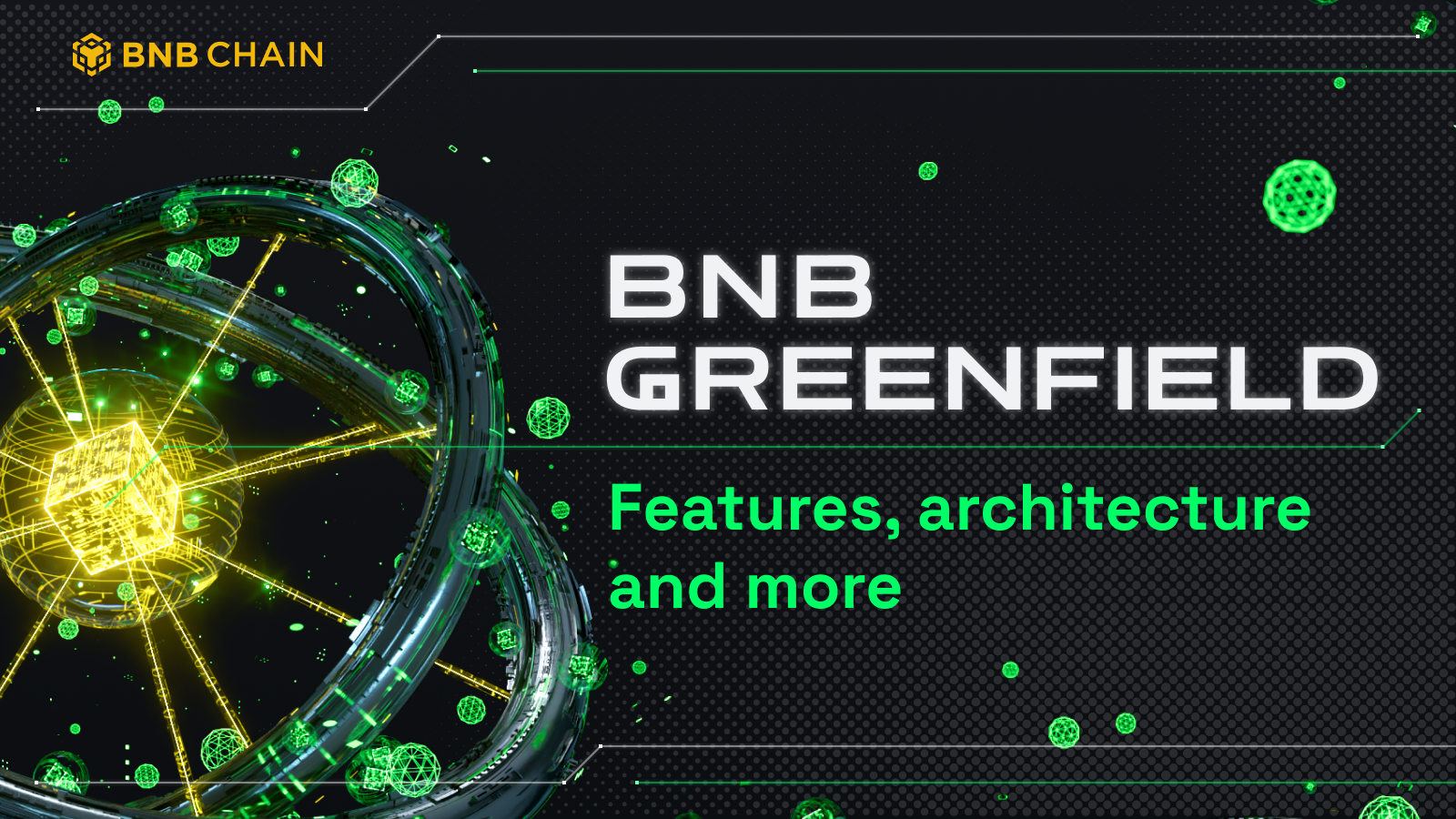
What Is BNB Greenfield?
BNB Greenfield is the BNB Chain’s solution to decentralized data storage via blockchain technology. Building on the core Web3 concept of decentralization, BNB Greenfield seeks to decentralize control over data such that no one entity can control, forcefully remove or seize someone else’s data. In short, BNB Greenfield will enable safe transactions on the blockchain without the reliance on a third party.
How Does BNB Greenfield Work?
BNB Greenfield’s infrastructure consists of its storage-focused blockchain, the BNB Greenfield blockchain, and a network of storage providers.
The BNB Greenfield chain uses the BNB token as its gas and governance token and is built on the Cosmos Proof-of-Stake (PoS) Tendermint consensus mechanism. This chain is a ledger that serves as the source of truth which holds the metadata regarding data stored by the storage provider network.The storage provider network, which can consist of individuals or organizations, then supports and responds to requests by users to read or write data when required. These storage providers hold the real data payload which is tied to their respective metadata on the BNB Greenfield blockchain. Storage providers also have to be registered and will have to make a deposit on the BNB Greenfield blockchain as a “Service Stake”. BNB Greenfield validators will then have to vote for these storage providers in a governance process before they are able to provide their service to the chain. Storage providers allow users to upload and download data via publicly available APIs. According to the BNB Greenfield whitepaper, these APIs will function similarly to Amazon S3 APIs, which will enable experienced developers to easily integrate them into their decentralized applications (DApps).
As a data storage layer, data availability remains the top priority for the chain. BNB Greenfield enables this through a process known as data availability challenges.At any point in time, anyone can submit a data availability challenge to the storage provider network. Additionally, the BNB Greenfield blockchain itself generates a random data availability challenge event at the end of each block. The data availability challenge requests a piece of data from the challenged storage provider and if the storage provider is unable to produce it or produces data that does not match what is expected, it will be deemed as “unavailable”. Upon agreement by more than two-thirds of the validators, the challenged storage provider is deemed to have failed the challenge and will be slashed. A cooling-off period will then be given for the storage provider to recover or restore this piece of data, after which it will be challenged again. If it fails the challenge again, it will be slashed once more.
Fees and Payments
With every decentralized storage layer, there is a need for payments to ensure the long-term sustainability of the chain, and BNB Greenfield is no different. Users will be charged in two parts: firstly, the gas fee to the validator to write the respective on-chain data, and secondly, the storage providers will also charge a fee for their service.For the storage providers, these fees can be split into object storage fees and read package fees. The object storage fee is a fee charged based on the size and type of data stored on BNB Greenfield. The read package fee, on the other hand, is a fixed fee payment which allows its data to be read up to a certain limit, after which bandwidth will be limited for future downloads. Read packages can be upgraded to higher tiers to allow for more downloads before hitting the limit. Both of these payments are charged on a stream basis, meaning they are charged every second as they are used.
Use Cases
BNB Greenfield opens up a variety of use cases for DApps and users on the BNB ecosystem. Some potential use cases include:
- Decentralized social media: Content creators and users are able to fully control and manage the ownership of their data and content.
- Personal cloud storage: Users are able manage their personal files such as photos, videos and documents without relying on centralized providers.
- Website hosting: Web hosting can also be done on Greenfield, allowing for censorship-resistant websites.
- Data markets: With the rise of ownership over personal data, users can monetize their personal data, allowing access only to those who pay for it
Currently, with the recent mainnet launch, these use cases are only a taste of what is possible with BNB Greenfield. As the chain increases in traction and usage, new use cases will inevitably develop for the data storage layer.


















